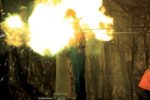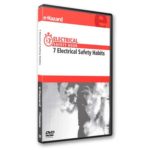Items Tagged with 'e-Hazard'
ARTICLES
What does OSHA’s new arc flash guidance mean for employers who don’t have a comprehensive electrical safety program that incorporates employee protection from arc flash hazards?
Read MoreNFPA 70E and lockout/tagout
NFPA 70E discusses complex and simple lockout/tagout. What is this? Does it apply if the work being performed is nonelectrical, such as a product or material change or repairing a mechanical shaft?
Read MoreAll about electrical risk assessments
What is the difference between an electrical risk assessment, a shock assessment and an arc flash assessment?
Read MoreElectrical safety
How often should we review our arc flash study? Do older buildings have a grandfather clause? With the changes in IEEE 1584, do we have any liability if we don’t recalculate because some areas will have higher energy levels now?
Read MoreElectrical safety
What recent innovations have the potential to protect workers from electrical injuries?
Read MoreWEBINARS
Webinar
Utility and Industrial Awareness on Electrical Protection for Hands
5/15/25 12:00 pm to 1:00 pm CDT








